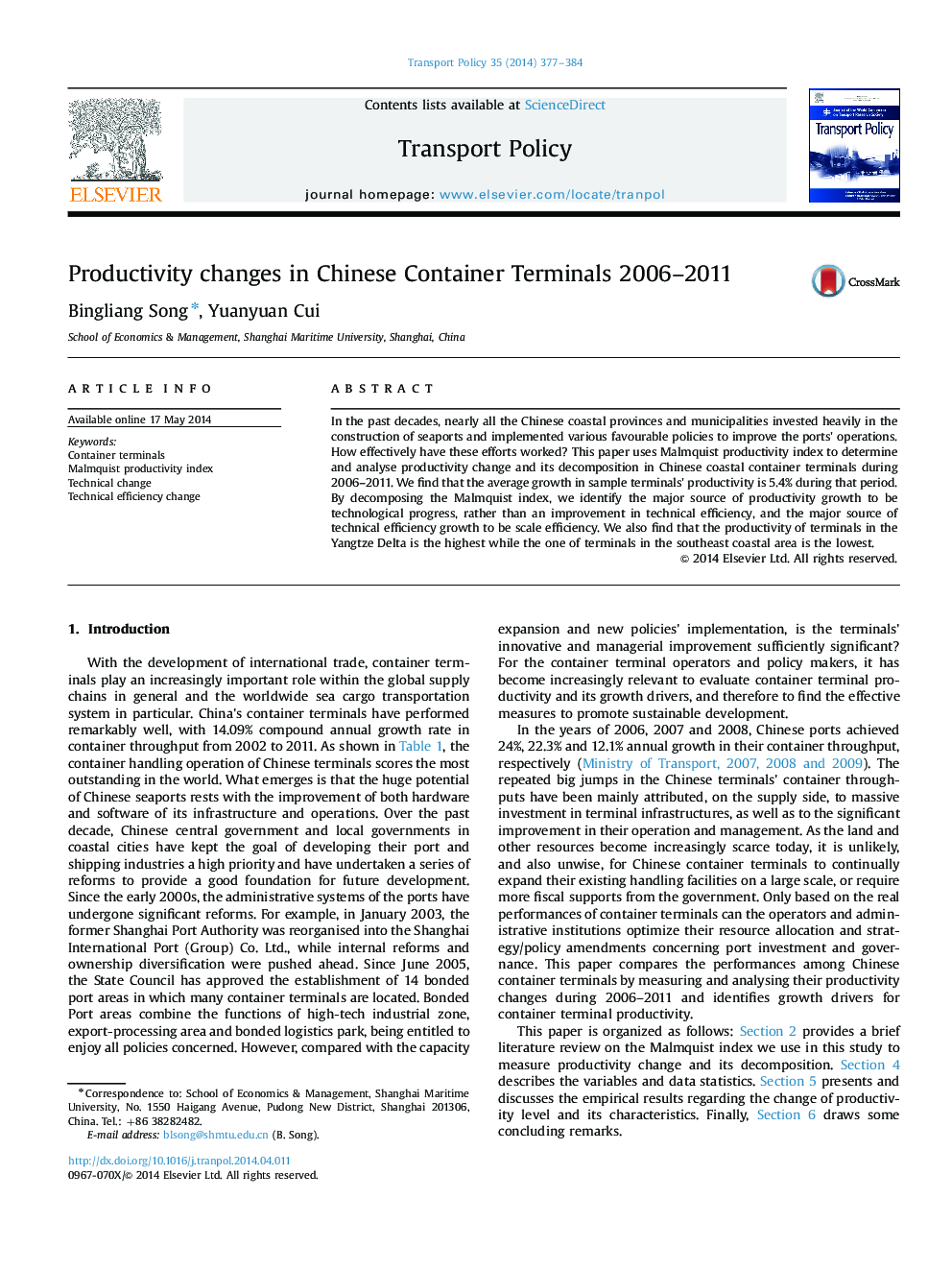| Article ID | Journal | Published Year | Pages | File Type |
|---|---|---|---|---|
| 1064894 | Transport Policy | 2014 | 8 Pages |
•We estimate the productivity changes in Chinese container terminals from 2006 to 2011 with the help of Malmquist index.•The major source of technical efficiency growth is scale efficiency, whereas the pure efficiency is decreased slightly.•Overseas investment or involvement is no longer one of the main engines for raising Chinese seaports' productivity.•The productivity of terminals also varies with host cities and gains from the policy of "Bonded Port Areas".
In the past decades, nearly all the Chinese coastal provinces and municipalities invested heavily in the construction of seaports and implemented various favourable policies to improve the ports׳ operations. How effectively have these efforts worked? This paper uses Malmquist productivity index to determine and analyse productivity change and its decomposition in Chinese coastal container terminals during 2006–2011. We find that the average growth in sample terminals׳ productivity is 5.4% during that period. By decomposing the Malmquist index, we identify the major source of productivity growth to be technological progress, rather than an improvement in technical efficiency, and the major source of technical efficiency growth to be scale efficiency. We also find that the productivity of terminals in the Yangtze Delta is the highest while the one of terminals in the southeast coastal area is the lowest.
